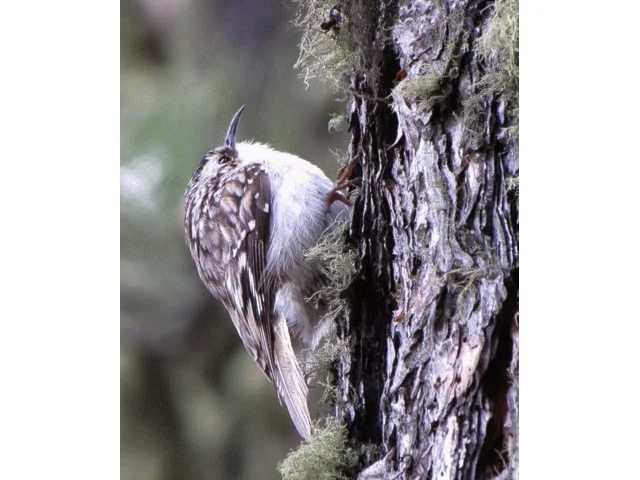 It is often the most cryptic-looking species to the human eye that hide the most obscure diversity, and few passerines are more camouflaged and difficult to observe differences in plumage detail in, than the Northern Hemisphere's treecreepers Certhia. A new study has now highlighted this by identifying deep divisions among the clades and lineages of Brown Creeper C americana.
It is often the most cryptic-looking species to the human eye that hide the most obscure diversity, and few passerines are more camouflaged and difficult to observe differences in plumage detail in, than the Northern Hemisphere's treecreepers Certhia. A new study has now highlighted this by identifying deep divisions among the clades and lineages of Brown Creeper C americana.
Using the complete sequence of the mitochondrial ND2 gene from continent-wide populations of Brown Creeper as well as as Treecreeper C familiaris and Short-toed Treecreeper C brachydactyla from Eurasia as 'outgroups', a team from universities in Nevada and South Dakota constructed a phylogeny that has demonstrated the potential for future splits in the species, as well as its likely evolutionary progress.
Their analysis identified six well-differentiated clades falling into two major population lineages to the north and south of the Sonoran/Chihuahuan desert, which forms a natural barrier between the pine belts of southern Mexico and those of North America. These match the east-west and north-south geographical patterns of several other passerine radiations in the Americas, probably from isolation caused by mountain ranges and desert areas, as well as underlining the transition between temperate and subtropical forest types.
The six clades identified match some of the currently accepted subspecific diversity, with the northern lineage incorporating clades from the Rocky Mountains (central and eastern C a montana and leucosticta), the Sierra Nevada and Cascade Mountains (C a alascensis, occidentalis, phillipsi, zelotes and the most western examples of montana) and eastern North America (americana and nigrescens); the southern lineage composes clades from Southern Arizona and northern Mexico (albescens and alticola), plus a truly Mexican clade from Chiapas (pernigra) and one from Honduras (extima).
The 4.1 to 5.1 per cent divergence in the DNA of the southern and northern lineages is estimated to represent around 4.6 million years of separation, indicating a pre-Ice Age origin in the Pliocene period. While the authors do not suggest that any of these clades are separate species, the divergence between the two main lineages is more than many species currently accepted by most authorities and should more information on assortative mating and vocalisations be discovered, such taxonomic divisions may well be firmed up.
The new study adds a transatlantic dimension to work already carried out by Tietze and Martens published in 2006 and 2008, which identified cryptic diversity in Palearctic Certhia, identifying two lineages from their vocalisation groupings and adding a ninth species - Hodgson's Treecreeper C hodgsoni - to the already generally recognised eight worldwide. Brown Creeper emerged as part of a Holarctic radiation of four species in their analysis, while C familiaris's ancestor also diverged into a complex Himalayan radiation of five species. Other recent work has identified vocal and biometric differences among European populations of C familiaris and C brachydactyla, particularly on Mediterranean islands, and new subspecies were tentatively proposed.
Reference: Manthey, J D, Klicka, J and Spellman, G M. 2010. Cryptic diversity in a widespread North American songbird: Phylogeography of the Brown Creeper (Certhia americana). Molecular Phylogenetics and Evolution doi:10.1016/j.ympev.2010.12.003.
Thanks to Joe Manthey, corresponding author, for his comments on this summary.
Cross-Atlantic creeper cryptics
a6e9806a-96ec-4a09-83de-66612096b623


